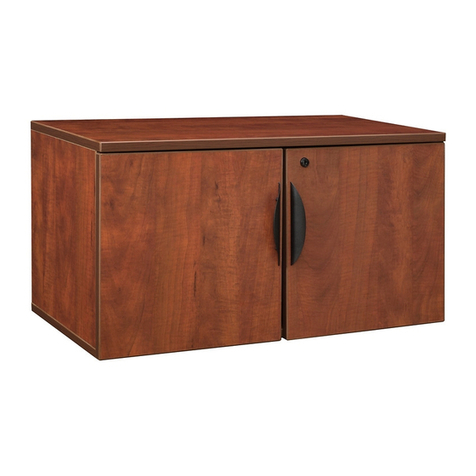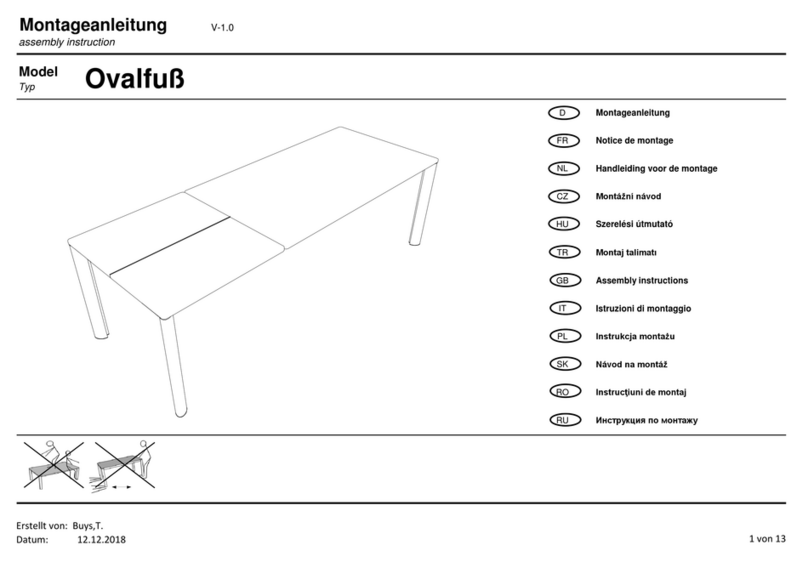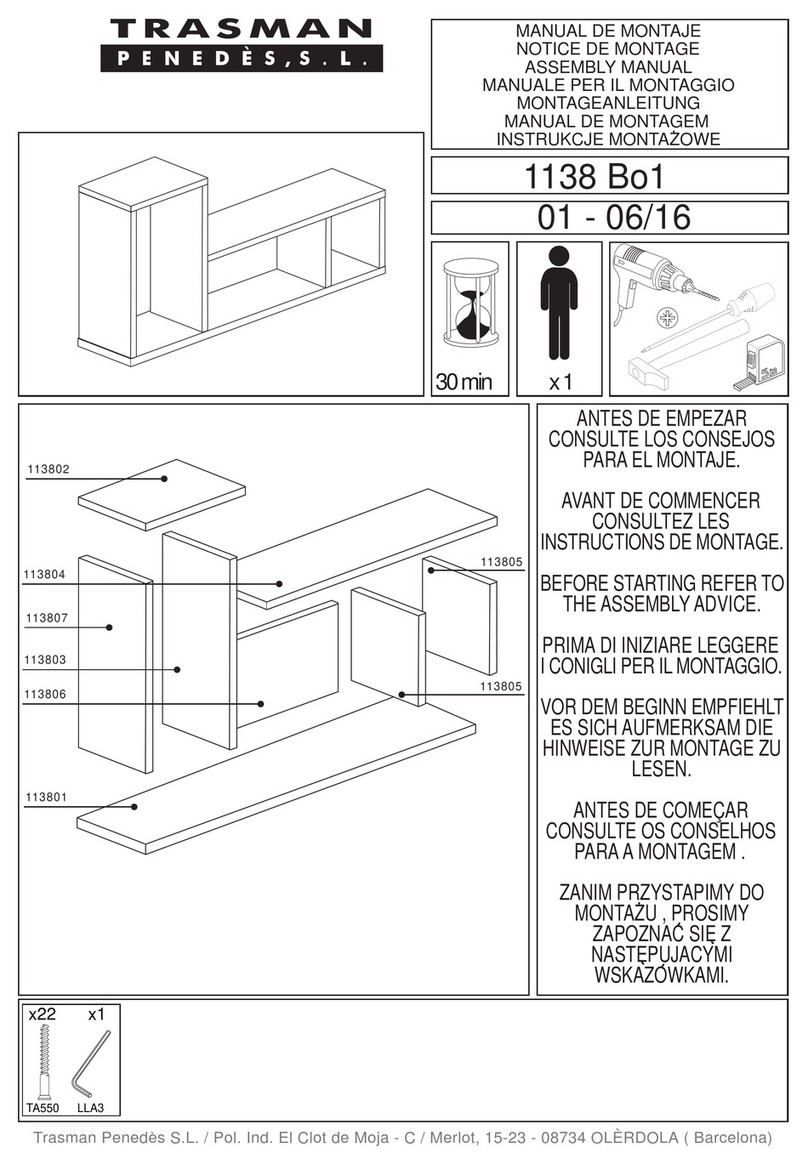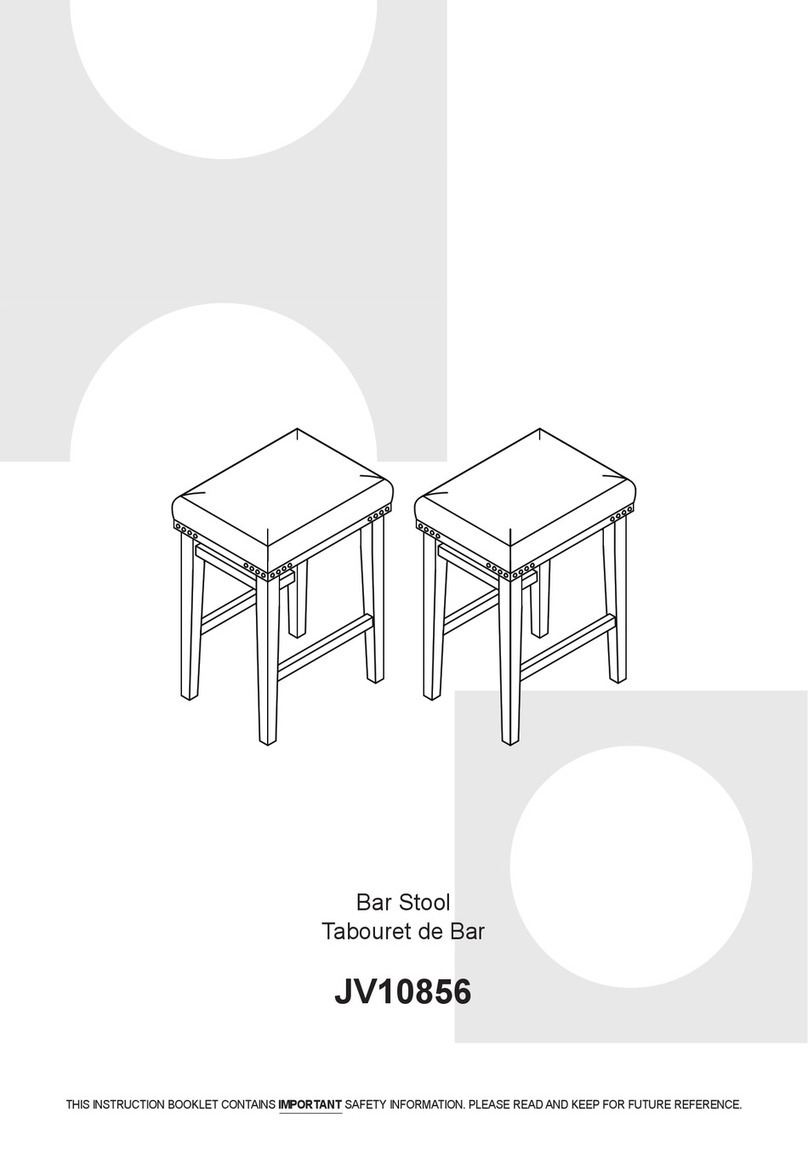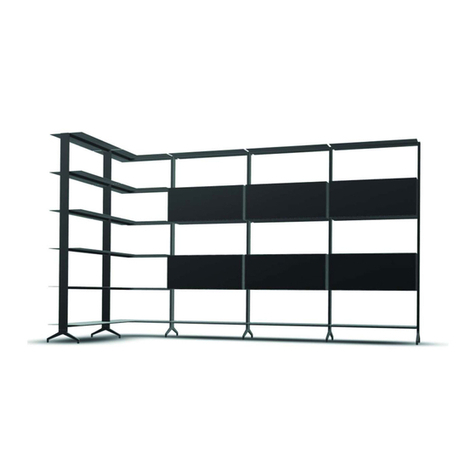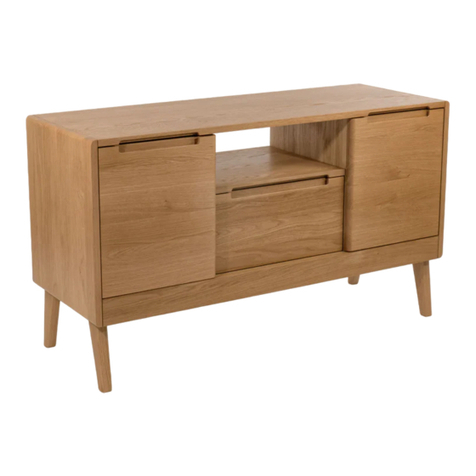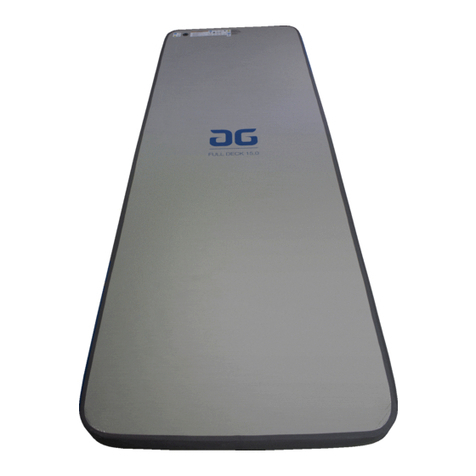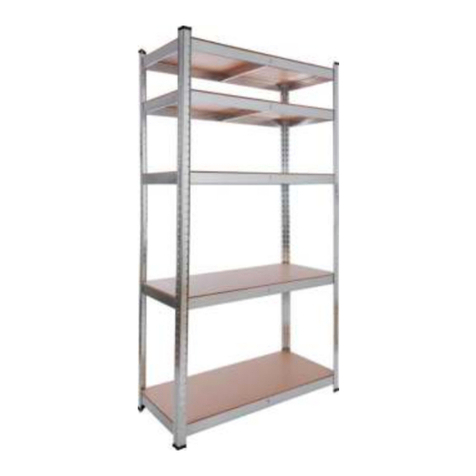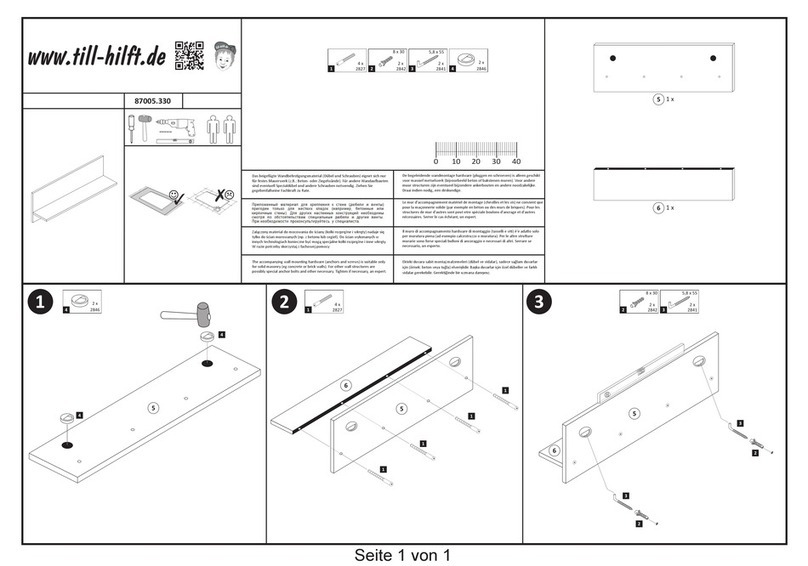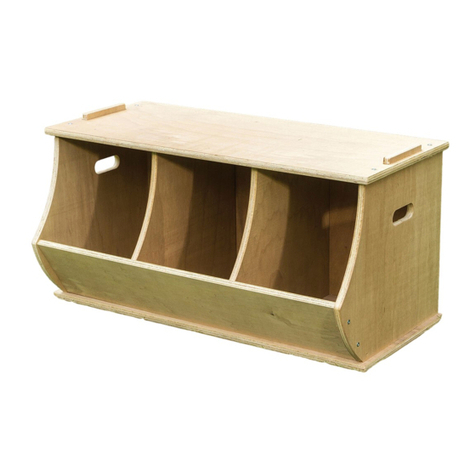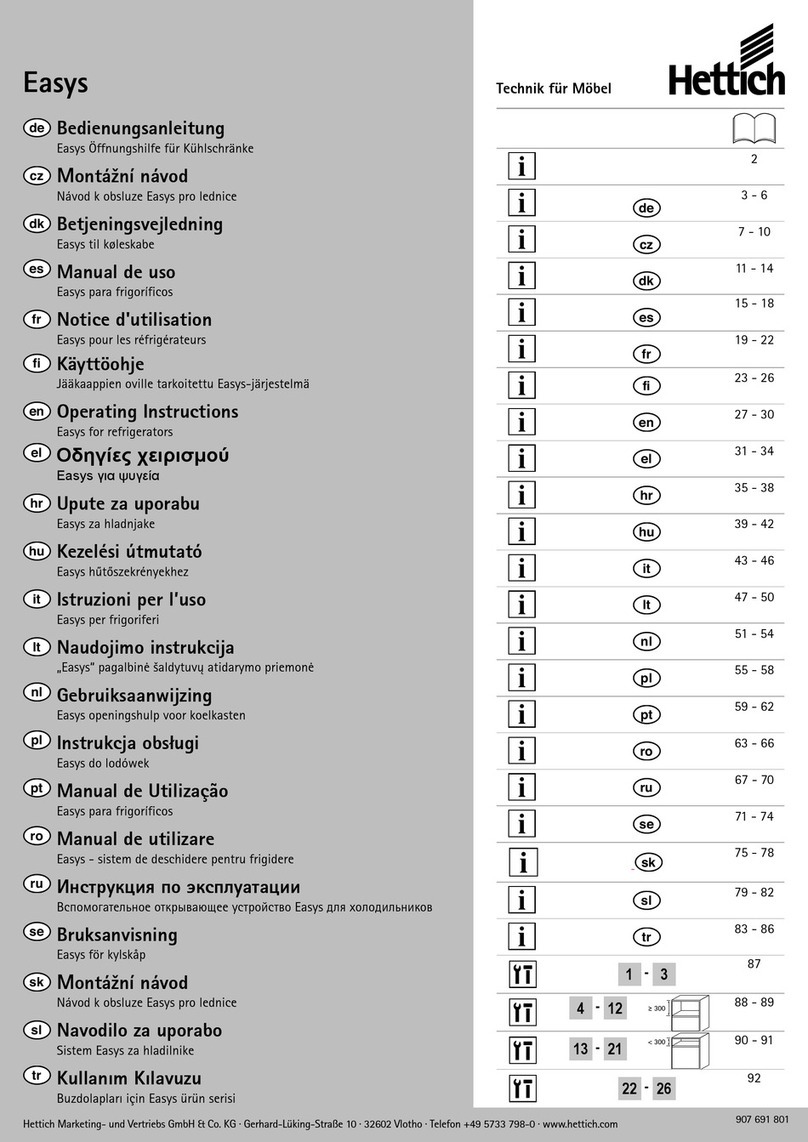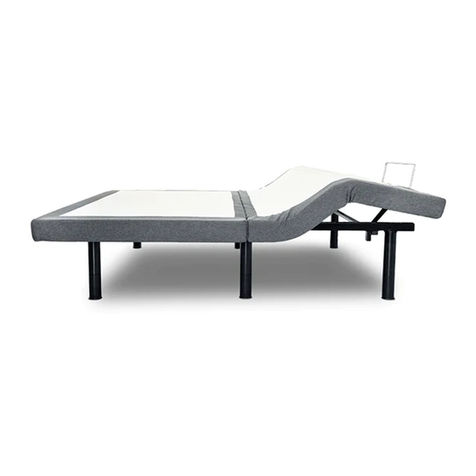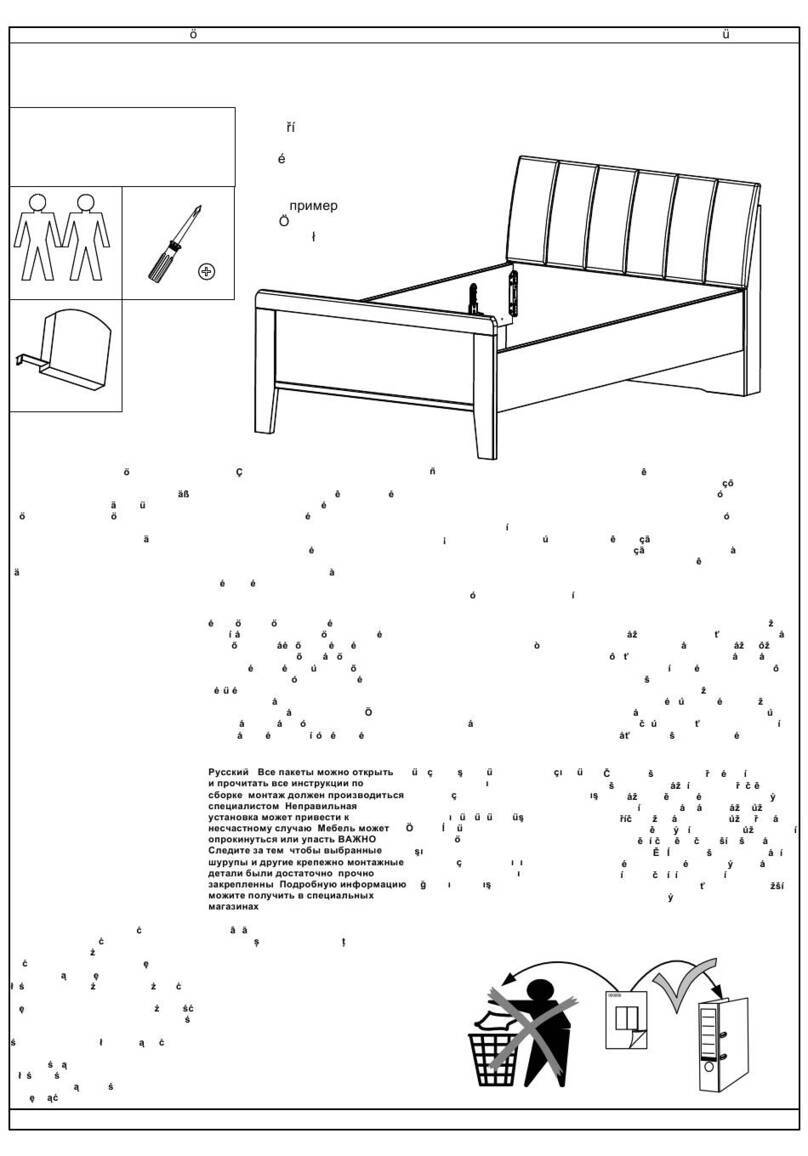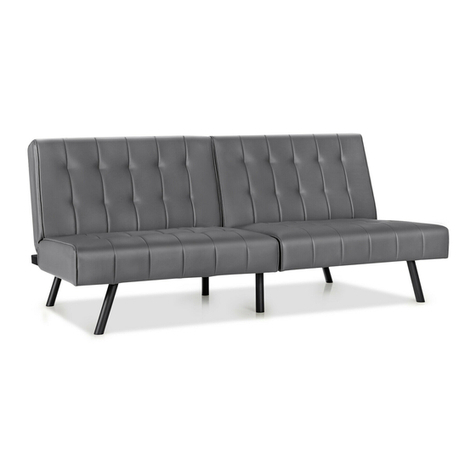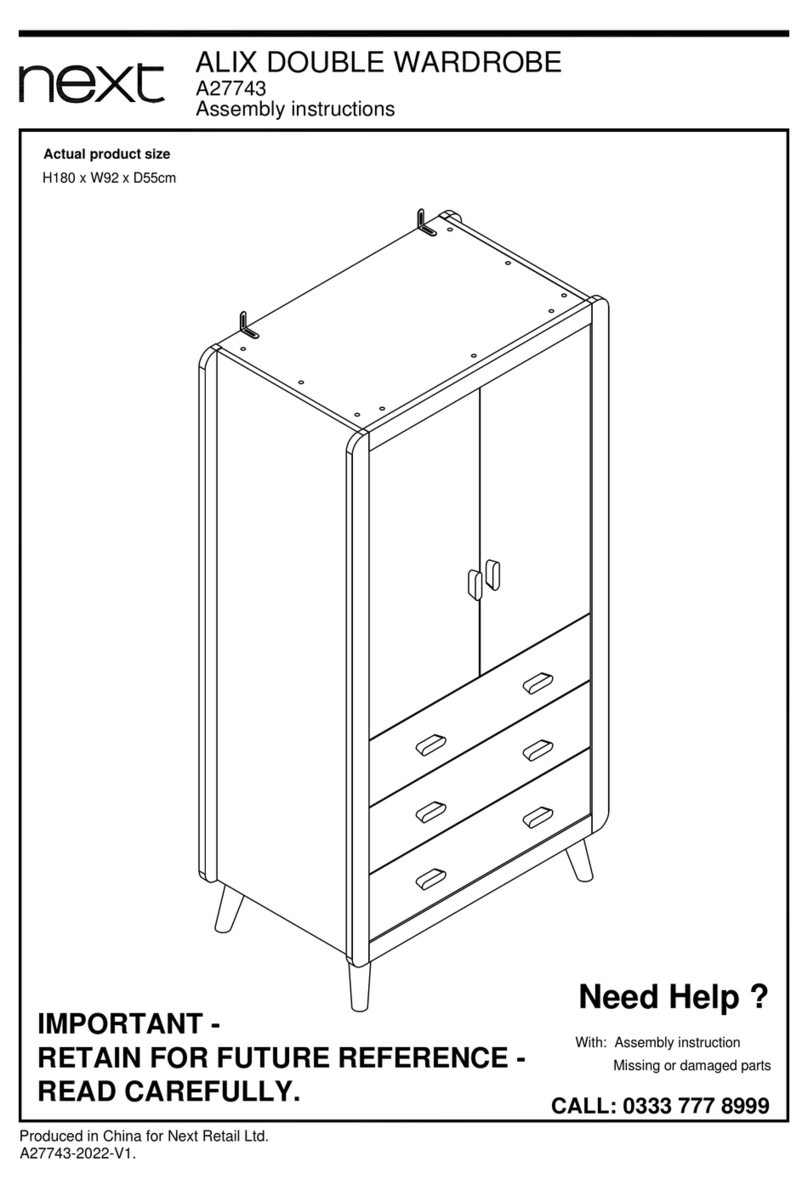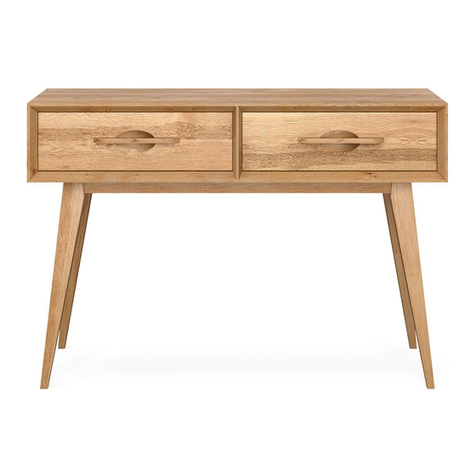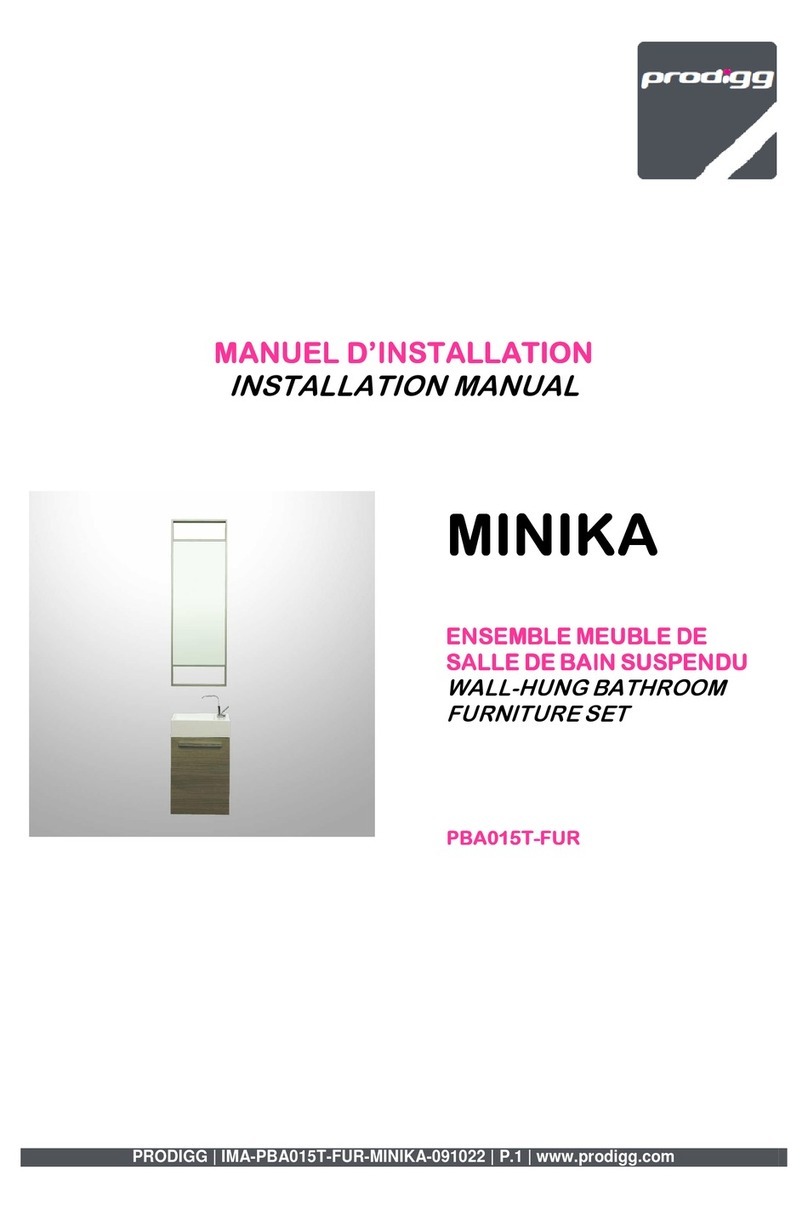
4
DE
GEBRAUCHSANWEISUNGEN
Das Produkt muss mit allen Beinen stehend auf einem waagrechten und harten (nicht nachgiebigem) Boden
verwendet werden. (Rollen im Fall des Rollkorpus). Die Paneele müssen in die entsprechenden Rillen in der
Tischplatte eingesetzt werden.Stets sorgfältig handhaben. Für die Montage des Tisches die in die Abbildungen
gezeigten Hinweise beachten.
WARTUNG
Teile aus lackiertem Metall Ein weiches, leicht angefeuchtetes Tuch verwenden. Zum Entfernen hartnäckiger
Flecken eine Lösung aus Wasser und neutralem Flüssigreiniger verwenden. Die behandelten Flächen sofort
abtrocknen. Keinesfalls Scheuermittel, Alkohol, Lösungsmittel, Trichloräthylen, Ammoniak oder Aceton
benutzen, da diese Substanzen die Eigenschaften der Lackierung irreversibel verändern könnten.
Teile aus Holz lackiert Ein weiches, leicht angefeuchtetes Tuch verwenden. Zum Entfernen hartnäckiger
Flecken eine Lösung aus Wasser und neutralem Flüssigreiniger verwenden. Die behandelten Flächen sofort
abtrocknen. Keinesfalls Scheuermittel, Lösungsmittel, Trichloräthylen, Ammoniak oder Aceton benutzen, da
diese Substanzen die Eigenschaften der Lackierung irreversibel verändern könnten.
Laminierte Teile Vor der Reinigung des Laminats ist es ratsam, den darauf abgelagerten Staub mit einem
Tuch zu entfernen. Zur täglichen Reinigung wischen Sie das Laminat einfach mit einem gut ausgewrungenen
feuchten Tuch ab. Für eine gründlichere Reinigung verwenden Sie stattdessen ein neutrales Reinigungsmittel.
Trocknen Sie das Produkt danach immer ab.
Bezug aus Stoff Die regelmäßige Pflege der Gewebe ist wichtig, um das Aussehen der Bezüge bestmöglich zu
erhalten und die Lebensdauer zu maximieren. Staub und Schmutz beschleunigen die Abnutzung der Gewebe
und beeinträchtigen deren Eigenschaften. Regelmäßig – vorzugsweise einmal wöchentlich - mit einem
Staubsauger (eventuell mit geringer Saugkraft) absaugen. Zur Behandlung eventueller Flecken verwenden sie
ein Tuch oder einen Schwamm mit warmem, sauberem Wasser getraenkt und gut ausgewrungen und tupfen
sie den den Fleck damit ab. Falls notwendig, den Fleck mit einem in Seifenwasser getränktem, Tuch abtupfen
und danach mit sauberem, lauwarmem Wasser nachbehandeln. Wurde der Fleck von einer dickflüssigen oder
festen Substanz verursacht, vor der Reinigung eventuelle Rückstände so weit wie möglich mit einem stumpfen
Messer, einem Spachtel oder einem Staubsauger entfernen. Die Oberfläche nicht reiben, damit sich durch
Farbverlust keine abgenutzten Stellen bilden bzw. der Flaum des Gewebes nicht beschädigt wird.
Teile aus Kunststoffmaterial Ein weiches, leicht angefeuchtetes Tuch verwenden. Zum Entfernen hartnäckiger
Flecken eine Lösung aus Wasser und neutralem Flüssigreiniger verwenden. Die behandelten Flächen sofort
abtrocknen. Keinesfalls Scheuermittel, Loesungsmittel, Trichlorathylen, Ammoniak oder Aceton benutzen, da
diese Substanzen die Eigenschaften der Schale irreversible verändern konnten.
VERWENDETE MATERIALIEN UND TECHNOLOGIEN
Tisch mit Beinen und Gestell aus extrudiertem Aluminium furniert oder lackiert; Platte aus bilaminiertem MDF
oder furniertem MDF; Nylonfüße. Kabelhalterung aus lackiertem Stahl. Gefraeste Rinnen um Trennwände
und Kabeldurchgaenge einzusetzen. In den Abmessungen L 318-400 cm, zentrales Bein aus lackiertem,
kompaktem Polyurethan mit verstellbaren Füßen.
Trennwände aus furniertem oder lackiertem MDF, Abdeckhaube aus Nylon-Verbundgewebe.
Rollkorpus aus lackiertem, kompakten Polyurethan mit gebremsten Rädern und Schubladen aus furniertem
oder lackiertem MDF.
VERMEIDEN SIE ES
- sich auf die Tischplatte zu setzen oder das Produkt für einen nicht vorgesehenen Zweck zu verwenden;
- auf den Rollkorpus zu steigen oder sich zu setzen
- das Produkt dem Wetter auszusetzen
- andere Reinigungsmittel zu verwenden als die vorgeschriebenen;
- eine Raumtemperatur von über 60°C zu überschreiten.
HINWEISE
Direkte Einwirkung von UV-Strahlen kann die Ästhetik des Stoffes beeinträchtigen.
Am Ende der Nutzungsdauer das Produkt bei einer öffentlichen Sammelstelle entsorgen.
